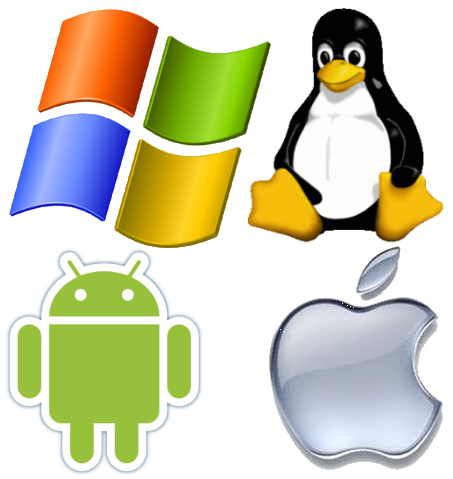You can buy Windows 10 on a USB stick and then use that stick to install Windows 10 to the hard drive. You should consider getting a good solid state disk SSD instead of a HDD for boot speed. … Companies do not sell hard disk wih OS pre-installed into it. You have to ask the seller to install it for you.
Do I have to buy Windows 10 for a new hard drive?
If your computer only has one hard drive and it has died, then your computer will no longer have Windows 10 anymore. However, the Windows 10 product key is stored in the motherboard’s BIOS chip. That basically means you do not need to purchase Windows 10 for your PC.
Can I transfer Windows 10 to a new hard drive?
Migrate your Windows 10 Installation to a New Hard Disk or SSD. Windows 10 includes a built-in option called System Image, which lets you create a complete replica of your installation along with partitions. … To back up your installation, you will need a USB external hard disk to store the image.
Do you have to rebuy windows if you get a new hard drive?
You’ll have to rebuy it. And pick the Full version that can be taken from a PC to another this time. No. Windows OS is on your Hard Drive or SSD so if you keep that, your OS will carry over.
How do I get Windows 10 to recognize a new hard drive?
Press Windows Key + X to open Win + X menu and choose Disk Management from the list. When the Disk Management window opens, you’ll see all connected hard drives listed. Take a look at the list, and find a drive listed as Disk 1, or Disk 10 (other names are possible, as well).
How do I install Windows 10 on a new hard drive without the disk?
To install Windows 10 after replacing the hard drive without disk, you can do it by using Windows Media Creation Tool. First, download the Windows 10 Media Creation Tool, then create Windows 10 installation media using a USB flash drive. Last, install Windows 10 to a new hard drive with USB.
Is Windows stored on the hard drive?
Yes, it is stored on the harddrive. You will need to: Reinstall windows from the DVD you got from Dell (if you ticked that EUR 5 option) … Or download a legal copy of the DVD and use the CoA on your laptop.
How do I transfer my operating system to a new hard drive?
Open your chosen backup application. In the main menu, look for the option that says Migrate OS to SSD/HDD, Clone, or Migrate. That’s the one you want. A new window should open, and the program will detect the drives connected to your computer and ask for a destination drive.
How do I move Windows 10 to SSD without reinstalling?
How to Migrate Windows 10 to SSD without Reinstalling OS?
- Preparation:
- Step 1: Run MiniTool Partition Wizard to transfer OS to SSD.
- Step 2: Select a method for Windows 10 transfer to SSD.
- Step 3: Select a destination disk.
- Step 4: Review the changes.
- Step 5: Read the boot note.
- Step 6: Apply all changes.
17 дек. 2020 г.
How do I transfer Windows 10 to another hard drive for free?
How to migrate Windows 10 to new hard drive for free?
- Download, install and run AOMEI Partition Assistant. …
- In the next window, select a partition or an unallocated space on the destination disk (SSD or HDD), and then click “Next”.
What happens if I install a new hard drive?
While it typically goes faster than transferring your OS to the new drive, doing a clean installation does mean that you’ll have reinstall the apps and games you want, and restore your personal files from backup (or copy them from the new drive).
Do I need a new Windows key for a new motherboard?
If you make significant hardware changes on your device, such as replacing your motherboard, Windows will no longer find a license that matches your device, and you’ll need to reactivate Windows to get it up and running. To activate Windows, you’ll need either a digital license or a product key.
Do you have to install OS when replacing hard drive?
Yes you do need to reinstall the OS. There are other steps to take as well. Your motherboard/video card drivers will need to be reinstalled after you install the OS.
Why is my computer not detecting my hard drive?
If your new harddisk is not detected by or Disk Manager, it could be because of a driver issue, connection issue, or faulty BIOS settings. These can be fixed. Connection issues can be from a faulty USB port, or a damaged cable. Incorrect BIOS settings may cause the new hard drive to be disabled.
How do I fix Windows not detecting my hard drive?
Two Quick Fixes for Hard Disk Not Detected in BIOS
- Shut down your PC at first.
- Open your computer cases and remove all the screws with a screw driver.
- Unplug the hard drive which fails to be recognized by Windows BIOS, and remove the ATA or SATA cable and its power cable.
20 февр. 2021 г.
Why doesn’t my hard drive show up on my PC?
If the drive still isn’t working, unplug it and try a different USB port. It’s possible the port in question is failing, or just being finicky with your specific drive. If it’s plugged into a USB 3.0 port, try a USB 2.0 port. If it’s plugged into a USB hub, try plugging it directly into the PC instead.
